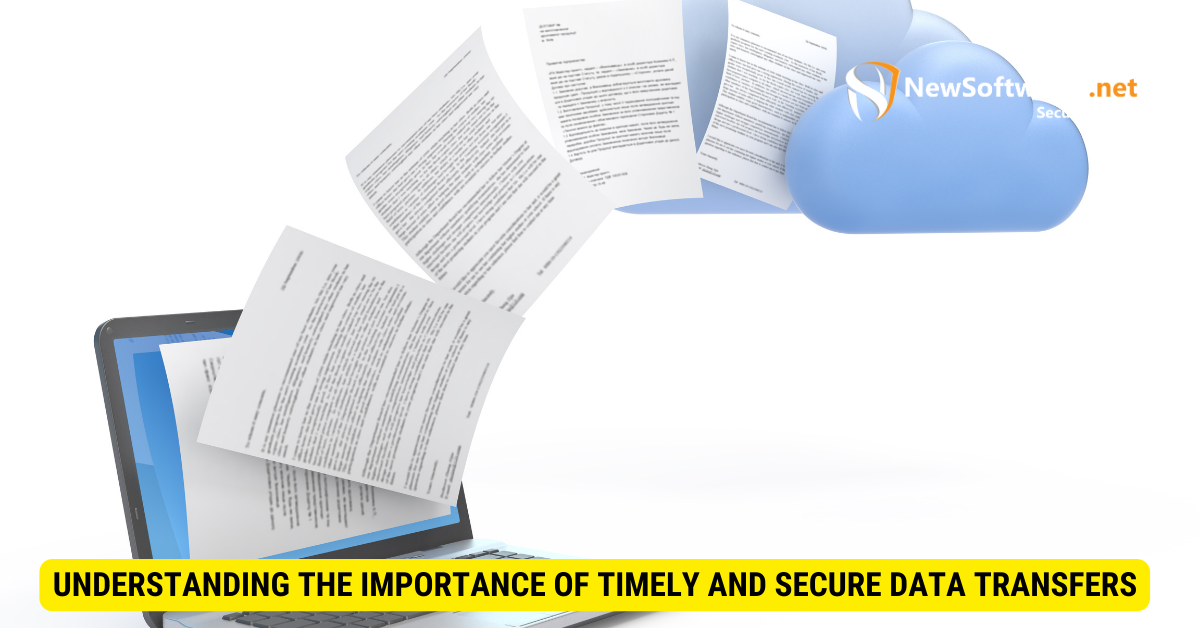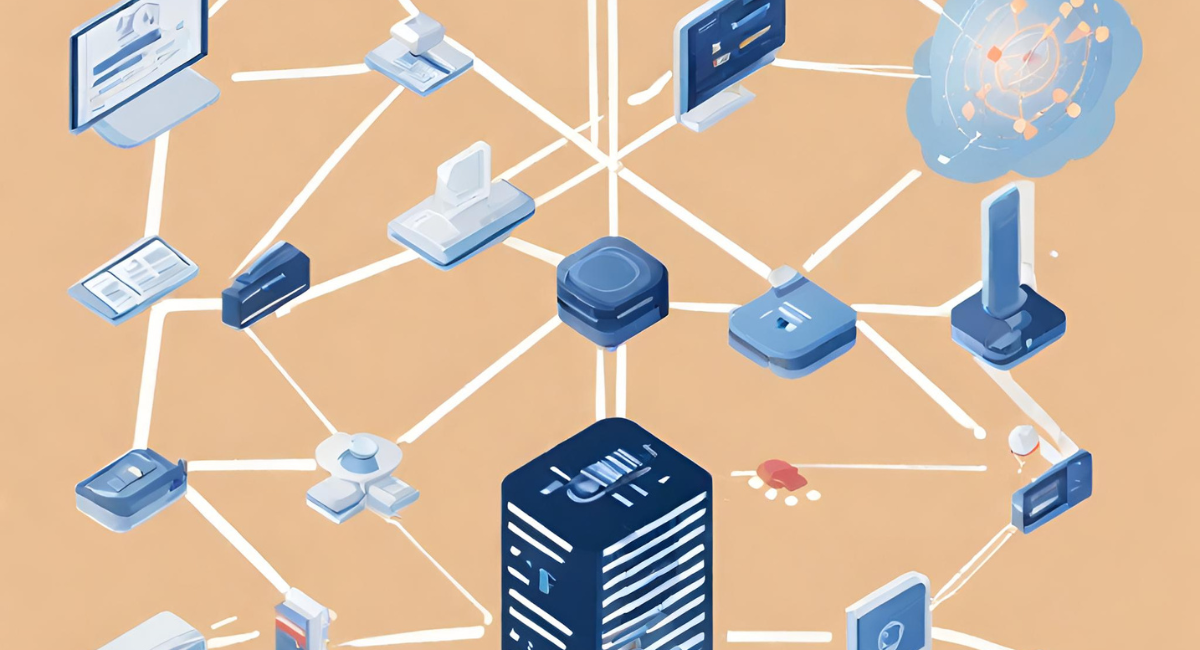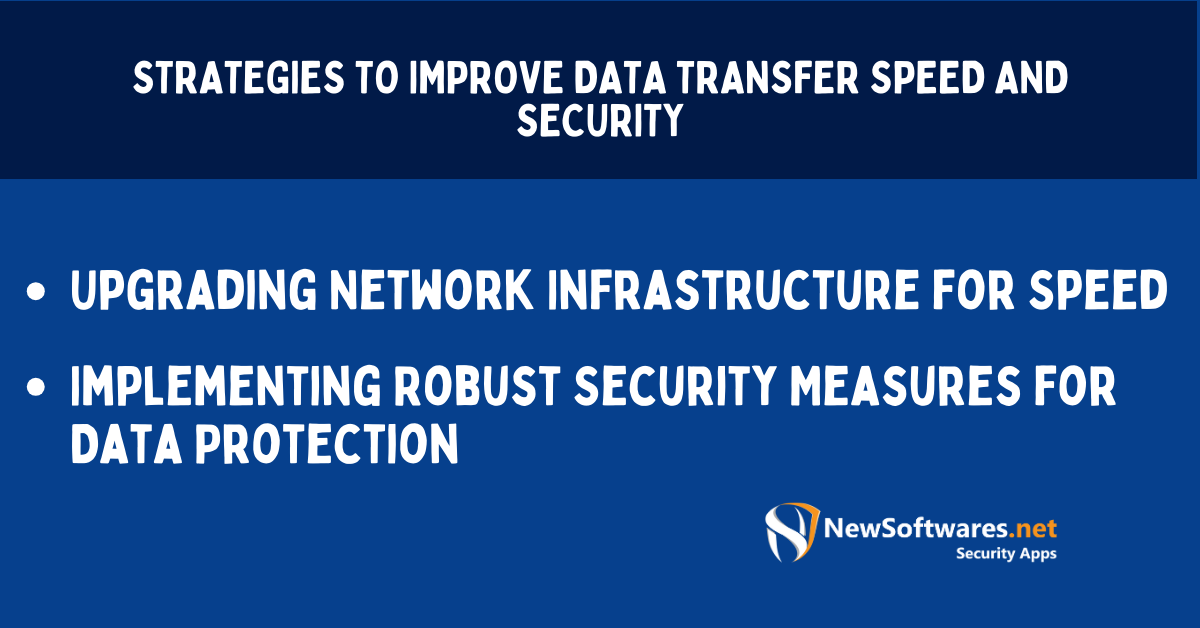To ensure timely and secure data transfers, utilize encrypted protocols, monitor network bandwidth, and employ reliable and updated software.
In today’s digital age, timely and secure data transfers have become paramount for businesses of all sizes. Data transfers play a crucial role in ensuring the smooth functioning of modern businesses, enabling the seamless exchange of information between different systems, departments, and even across organizations. However, delayed or insecure data transfers can pose serious risks, compromising confidentiality, integrity, and availability of critical data. To mitigate these dangers, it is essential to understand the key elements of both timely and secure data transfers.
Understanding the Importance of Timely and Secure Data Transfers

Data transfers are the lifeblood of modern businesses, facilitating the exchange of information that drives crucial decision-making processes. Whether transmitting customer orders, transferring financial data, or sharing project updates, timely data transfers ensure that information is available when needed, leading to increased efficiency and productivity. Additionally, secure data transfers are imperative to safeguard sensitive data against unauthorized access, ensuring compliance with data protection regulations and safeguarding the reputation and trust of the organization.
The Role of Data Transfers in Modern Business
Data transfers form the backbone of modern business operations, enabling efficient collaboration, seamless communication, and streamlined workflows. They allow organizations to share information quickly and accurately, supporting decision-making processes and facilitating the implementation of business strategies. Timely data transfers enable real-time analytics, ensuring accurate insights and informed decision-making. Furthermore, immediate access to data promotes responsiveness to customer demands, enhancing customer satisfaction levels and driving business growth.
In today’s digital age, where information is constantly being generated and updated, the ability to transfer data quickly and securely is paramount. Consider a scenario where a multinational company is working on a global project with team members in different parts of the world. Timely data transfers allow team members to collaborate effectively, regardless of their physical location. This ensures everyone can access the most up-to-date information, enabling them to make informed decisions and contribute to the project’s success.
Moreover, data transfers play a crucial role in supply chain management. For example, a manufacturer relies on timely data transfers to receive accurate inventory information from suppliers. This allows them to plan production schedules, manage inventory levels, and meet customer demands efficiently. Without timely data transfers, the manufacturer may delay receiving critical information, leading to stockouts, production bottlenecks, and dissatisfied customers.
Risks Associated with Delayed or Insecure Data Transfers
Delayed data transfers can have severe consequences for businesses. In today’s fast-paced world, where time is of the essence, delayed data transfers can lead to missed opportunities, delayed actions, and a loss of competitive advantage. Imagine a scenario where a company is bidding for a lucrative contract. Timely data transfers are essential for submitting the proposal within the deadline. Any delay in transferring the necessary information could result in the company losing the opportunity to secure the contract with a competitor.
Additionally, delayed transfers can disrupt business operations, negatively impacting customer service, supply chain management, and overall productivity. For example, consider an e-commerce company that relies on timely data transfers to process customer orders. If there are delays in transferring order information to the warehouse for fulfillment, customers may experience delays in receiving their purchases, leading to dissatisfaction and potential loss of business.
Moreover, insecure data transfers can expose sensitive information to unauthorized individuals, leading to data breaches, identity theft, financial loss, and legal consequences. Organizations that handle customer data, financial information, or trade secrets must prioritize secure data transfers to protect their stakeholders’ interests. Implementing encryption protocols, secure file transfer protocols (SFTP), and multi-factor authentication can help mitigate the risks associated with insecure data transfers.
It is worth noting that data protection rules, such as the General Data Protection Regulation (GDPR) in the European Union, impose strict requirements on organizations regarding data transfers. Non-compliance with these rules can result in hefty fines, reputational damage, and loss of customer trust. Therefore, organizations must prioritize secure data transfers to ensure compliance and maintain a strong reputation in the market.
In conclusion, timely and secure data transfers are essential for modern businesses to thrive in a competitive landscape. They enable efficient collaboration, informed decision-making, and streamlined workflows. Delayed or insecure data transfers can have severe consequences, including missed opportunities, disrupted operations, and compromised data security. By prioritizing timely and secure data transfers, organizations can enhance productivity, protect sensitive information, and maintain a competitive edge in the market.
Key Elements of Timely Data Transfers
To ensure timely data transfers, organizations must have robust network infrastructures and efficient data transfer protocols in place. Network speed plays a crucial role in data transfers, and organizations must invest in high-speed internet connections and regularly monitor and optimize network performance. Furthermore, scheduling and automating data transfers can enhance efficiency by eliminating manual intervention and reducing the likelihood of delays.
The Impact of Network Speed on Data Transfers

Network speed directly impacts the efficiency and speed of data transfers. Slow internet connections can result in prolonged transfer times, hampering business operations and productivity. Organizations should invest in high-speed internet connections, such as fiber optics or dedicated leased lines, to ensure timely data transfers. Regularly monitoring network performance and promptly addressing issues can optimize data transfer speed.
Moreover, network speed not only affects the transfer of small files but also significantly impacts large-scale data transfers; for organizations dealing with massive datasets, such as scientific research institutions or financial institutions processing large volumes of transactions, high-speed internet connections are essential. The ability to transfer large files quickly enables these organizations to analyze data in real time, make knowledgeable decisions, and stay ahead of the competition.
Additionally, network speed plays a crucial role in cloud-based data transfers. With the growing adoption of cloud computing, organizations rely on transferring data to and from cloud platforms. A fast network connection ensures that data can be seamlessly transferred between on-premises infrastructure and cloud environments, enabling efficient collaboration, data backup, and disaster recovery.
Scheduling and Automating Data Transfers for Efficiency
Scheduling and automating data transfers can significantly improve efficiency and reduce delays. Organizations can establish predefined transfer schedules by setting up automated processes, ensuring information is exchanged at the right time without manual intervention. Automated data transfers also minimize the risk of human error, guaranteeing accuracy and reliability.
Furthermore, scheduling data transfers based on network usage patterns can optimize overall performance. Organizations can avoid peak usage times and ensure that data transfers occur when network traffic is minimal, maximizing available bandwidth and minimizing transfer times. This approach is particularly beneficial for organizations operating in global markets, where data transfers may need to occur across different time zones.
In addition to scheduling, organizations can leverage automation tools to monitor data transfer activities. These tools can track transfer progress, provide real-time notifications of any issues or delays, and automatically initiate remedial actions if necessary. This proactive approach reduces the risk of data transfer failures and ensures that critical information is delivered on time.
Moreover, automation can also enable organizations to streamline complex data transfer workflows. For example, in industries such as e-commerce or logistics, where multiple systems and applications need to exchange data, automation can simplify the process by orchestrating the transfer sequence and ensuring data integrity. This saves time and reduces the potential for errors that may arise from manual intervention.
In conclusion, timely data transfers require a combination of robust network infrastructures, high-speed internet connections, and efficient data transfer protocols. By investing in these key elements and implementing scheduling and automation strategies, organizations can optimize data transfer speed, improve efficiency, and ensure that critical information is delivered accurately and on time.
Essential Features of Secure Data Transfers
While timely data transfers are crucial for operational efficiency, secure data transfers are equally important to protect sensitive information from potential threats. Implementing robust security measures is essential to mitigate the risks of data breaches, unauthorized access, and data loss.
Data Encryption and its Significance
Data encryption is a fundamental security measure in ensuring secure data transfers. Encoding information in transit makes data unreadable to unauthorized individuals, safeguarding confidentiality. Organizations should adopt robust encryption standards, such as AES (Advanced Encryption Standard), and ensure that data remains encrypted during transit and at rest.
Secure Transfer Protocols: An Overview
Utilizing secure transfer protocols is another critical aspect of secure data transfers. HTTPS (Hypertext Transfer Protocol Secure) and SFTP (Secure File Transfer Protocol) encrypt data during transit, providing an additional layer of security. Organizations can enhance data protection and reduce vulnerability to cyber threats by adopting industry-standard secure transfer protocols.
Strategies to Improve Data Transfer Speed and Security

To ensure timely and secure data transfers, organizations can implement several strategies to enhance network speed and fortify security measures.
Upgrading Network Infrastructure for Speed
Investing in high-speed network infrastructures, such as fiber optic connections or cloud-based solutions, can significantly improve data transfer speed. Organizations can minimize transfer times and enhance overall efficiency by upgrading network hardware and utilizing advanced technologies.
Implementing Robust Security Measures for Data Protection
Establishing robust security measures is crucial to protect sensitive data during transfers. This includes implementing firewalls, intrusion detection systems, and antivirus software to prevent unauthorized access and potential data breaches. Regular security audits, vulnerability assessments, and penetration testing should also be conducted to identify and address any potential weaknesses in the data transfer process.
Monitoring and Maintaining Data Transfer Performance
Continuous monitoring and maintenance of data transfer performance are critical to ensure optimal efficiency and security.
Tools for Tracking Data Transfer Speed and Security
Organizations can utilize various tools and software to monitor data transfer speed and security. Network monitoring tools provide real-time insights into network performance, allowing organizations to promptly identify and address any bottlenecks or issues. Data transfer logs and audit trails also help track data movement, enabling organizations to detect any suspicious activities or anomalies.
Regular Audits and Updates to Ensure Optimal Performance
Regular audits and updates are crucial to assess and enhance data transfer performance. Organizations should conduct periodic audits to evaluate the efficacy of existing data transfer processes and protocols. Organizations can proactively address emerging security threats and optimize their data transfer performance by staying up to date with the latest industry standards.
Key Takeaways
- Use encrypted communication protocols like SSL/TLS.
- Regularly update and patch software and systems.
- Monitor network traffic for anomalies.
- Employ multi-factor authentication for data access.
- Test transfer systems periodically for vulnerabilities.
FAQs
Q: What protocols should I prioritize for secure transfers?
A: SSL/TLS for web traffic and SFTP for file transfers are recommended.
Q: How often should I patch and update my software?
A: As soon as patches are available, especially for critical vulnerabilities.
Q: What is multi-factor authentication?
A: It requires multiple forms of verification before granting access.
Q: Why should I monitor network traffic?
A: It helps in identifying unauthorized or malicious activity.
Q: How can I test for vulnerabilities?
A: Employ penetration testing and vulnerability assessments.
Conclusion
In conclusion, ensuring timely and secure data transfers is essential for modern businesses to thrive in today’s digital landscape. By understanding the importance of timely and secure data transfers, organizations can implement key elements such as network speed optimization, scheduling, automating transfers, data encryption, and secure transfer protocols. Additionally, upgrading network infrastructures, implementing robust security measures, and monitoring and maintaining data transfer performance can further enhance efficiency and protect sensitive information. By adopting these measures, organizations can maintain a competitive edge, safeguard their reputation, and ensure the seamless flow of information critical for success in the digital age.
